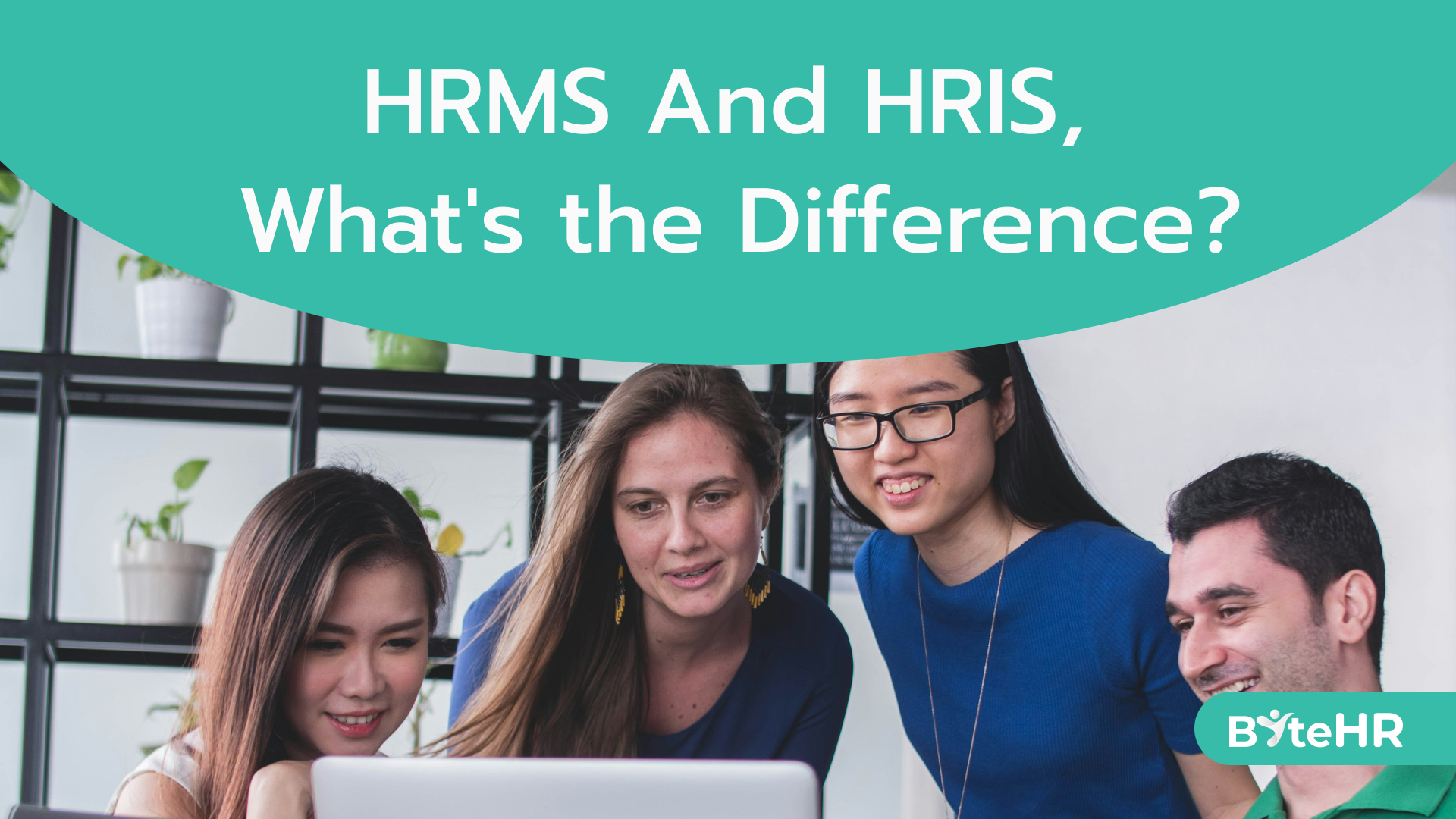HRMS And HRIS, What's the Difference?
HRMS And HRIS, What's the Difference?

Most businesses today use some kind of software in relation to human resource work, which can involve managing a large amount of data that continues to build with time. HRMS and HRIS are two terms that are often used interchangeably to refer to these systems. While there are some similarities, they are not the same thing.
HRMS stands for a human resource management system, while HRIS is a human resource information system. To better understand how these two differ and overlap, let us define what they are and what they do for organisations.
What is an HRMS?
An HRMS is a comprehensive software solution that enables organisations to manage the various aspects of human resources. This includes all the features that make up HRIS, alongside other functions that facilitate the management of employees. It tracks various types of data related to employees such as payroll, taxation, sick leave days, vacation days, training, and performance appraisals.
The dynamic data handled by HRMS is continually updated and can be retrieved when and as needed. Besides storing data, these systems can also be used for predictive analysis that can be of value in such areas as recruitment and training decisions.
Some of the common features and tools you will encounter within an HRMS include:
- Payroll system
- Time attendance management
- Benefits administration
- Workflows
- Performance management
- Talent acquisition and retention
- Training and development
HRMS can also be used to store static or master employee data such as employee names, addresses, social security information, addresses and so on. This data is typically stored under the payroll and benefits administration functions.
What is an HRIS?
HRIS systems deal primarily with static data that often remain unchanged for long periods of time. The focus of this data is to record details associated with the people, procedures, and policies of the organisation. This can include such information as:
- ID names and gender
- Educational qualifications
- Tax status
- Addresses
- Benefits
- Leave balances
Some payroll data can also sometimes be a part of HRIS. All this is still valuable data, but creates a system where it can be easily retrieved without the need to dig into files every time. The data can be analysed to provide helpful insights into employees and the organisation.
What Is the Difference?
There are some functions that you may find common to both HRMS and HRIS. HRMS however tends to be more global in its scope. For instance, when it comes to payroll management, an HRMS system is better able to accommodate the varied tax laws that apply to employees working in different countries. This can make it more suitable for multinationals or other businesses that handle cross-border transactions.
While an HRIS can have some common functions and features, its tools and processes are more basic and focus on the more essential human resource management tasks. The local scope makes it suitable for many businesses just starting and getting to grips with what workforce management is all about.
HRMS is the most comprehensive option that includes all the features offered in HRIS. That said, this does not necessarily mean that it is the best option when it comes to HR management. Organisations need to match their choice of system to their needs, now and in future. For some, many sophisticated HRISs may prove adequate, while for others an HRMS would be preferable.
Organisations need to try and identify the range of functions and tools they want for their HR software. This should be used as a guide in choosing the best fit of system as you may find that many vendors will label their product as HRMS and HRISs, without strictly adhering to their definitions and scope. Since the lines can get blurred, less attention should be paid to the acronyms used and more to the capabilities of the software you are considering.
There are human resource management systems that offer a blend of both HRMS and HRIS. By combining the features and functions of both into one system, there is less cost and training required to utilize such contemporary HR systems. When combined, the systems are often simply referred to as HRMS. If you opt to go for the more comprehensive HRMS option, it makes sense to ensure that the broader HRMS features are included, together with whatever more distinct static data analysis HRIS capabilities you desire.
Why You Need HR Software
The human element is the lifeblood of any organisation. No work can get done without human resources. This makes managing everything from their recruitment to compensation vital to sustaining the improving business performance. The right choice of management software can offer several key benefits that more than compensate for the cost of investment.
- Automation
HR systems make it possible for the most mundane and repetitive tasks required to manage employees to be undertaken with just a few moments spent at the keyboard. When data is correctly entered, there are no errors as would be the case if a human had to keep repeating the work. The speed and efficiency with which employee affairs can be handled make such software highly valuable in reducing workload. - Productivity
The HR work related to even thousands of employees can now be undertaken by just a few staff members thanks to management software. They allow managing such functions as payroll, benefits, administration and much simpler. This allows HR staff to have more time to attend to other crucial work like recruitment and organising training. - Better employee experience
Many HR systems are accessible to all employees through some form of company intranet. This allows them to engage with the HR department more easily and provides a user-friendly, clear and transparent system through which their needs can be met. This ease of communication and efficiency in handling tasks can improve employees’ perception of how HR departments work. - Improved decision making
HR systems store massive amounts of data and offer ways to develop valuable insights through analysis. These can be used to better guide and hasten decision making. By relying on evidence-based reports, management can inspire greater faith in their decisions from other stakeholders including employees and investors.


